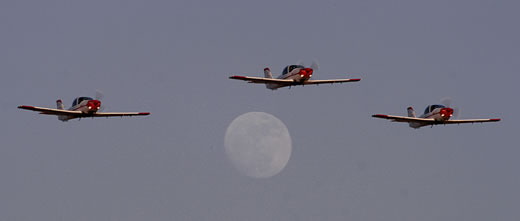
Offering its G120TP as an ‘intelligent training solution for the 21st Century’ for the Indian Air Force, Grob Aircraft has extended its innovative concept of more efficient pilot training, utilizing a single platform to cover several phases of the pilot training process. This solution is now being implemented at different phases by several air forces, offers great saving in pilot training while improving training quality and pilot skills. According to Andre Hiebeler, Co-Chief Executive Officer at Grob Aircraft, the Grob offering addresses much more than fighter pilot training, “our concept streamlines the whole pilot training process, from the elementary to the basic and advanced phases. G120TP is quite an expensive option for the screening process admits Hiebeler, but this phase is too short (about five hours per cadet) to justify the acquisition and operation of a dedicated type. According to Hiebeler, G120TP is positioned as the best solution for the basic and advanced training phases, accounting for about 80 flight hours per cadet. The Indian Air Force plans to use its new basic trainers only for the elementary-basic phase currently performed on HPT-32 Deepak. While the results of the recent tests held in October were not published yet, Defense-Updtae has learned that last week the Indian Air Force has decided to proceed with three trainers: the American Hawker Beechcraft T-6C Texan, Korean Aerospace Industries KT-1 and the Swiss Pilatus PC-7 MkII to proceed to commercial and legal negotiations. Two other competitors failed this stage – the Grob G120TP and Polish PZl 0-130 Orlik proposed by EADS.

Regardless of the IAF decision about the specific HPT32 basic trainer replacement, the innovative approach to pilot training presented by Grob remains valid and unique. “This will not affect our decision to be in this market for the long term” Hiebeler commented. Using its integrated ‘virtual avionics’ the G120TP can save 5-10 flight hours on advanced jet trainer such as Hawk 128, at an equivalent cost of $200,000 per cadet. Hiebeler said the G120TP have demonstrated extremely high rate of dispatch, meeting an average 98.5% in the U.S.A and Canada and 97% in France and Israel with the G120A. The differences in readiness levels are effected by the number of aircraft available with local fleets. India is planning to buy 75 training aircraft to replace the HPT32 trainer, using them as basic trainers. After completing about 50 hours on the basic phase cadets advance to the advanced phase, currently flying on HAL Kiran Mk1 trainers, which will be replaced by the Sitara Intermediate Jet Trainer,(IJT) also bilt by HAL, where cadets are flying abot 30 hours of advanced training. Then, prepared for their missions as jet pilots, trainees move on to the Hawk 128 advanced jet trainers.
With the new concept proposed by Grob, the G120TP is equipped with configurable cockpit instrumentation developed by Israel’s Elbit Systems. The instrumentation can be configured according to the stage and goal of the training, i.e. simple displays for basic phase, jet-type MFDs for pilots destined for fighter course or dial-like instruments designed for those destined for helicopters or transport pilots. Virtual avionics are also employed to represent more complex systems without having the actual avioinc units on board, like weather radar, fighter radar, radar warning system or situational display. Furthermore, using the Targo helmet mounted display pilots can train with ‘simulated HUD’ and helmet displays as early as possible, without having to fly on expensive and complex advanced trainers, therefore reserving actual HUD training for the pilots who actually need this skill. The cockpit avionics, along with the Targo helmet and virtual avionics, are provided by Grob’s team member Elbit Systems, which also operates the G120TP (called Snunit) for the Israel Air Force via Private Finance Initiative (PFI).
Photo: Nehemia Gershuni
Enter your Email to subscribe free to Airshow-Live!
Preview | Powered by FeedBlitz
















